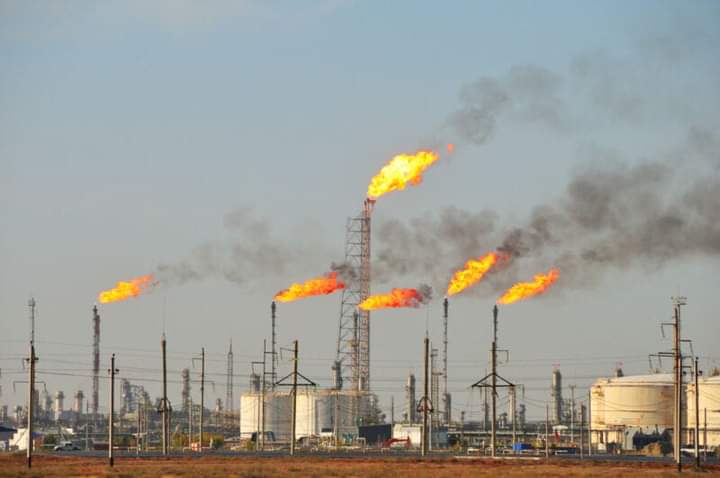GAS FLARE: Health Effects And Environmental Impacts

Did you know that Russia is the largest gas flaring country, having emitted 25.41 billion cubic meters in 2021, and the United States flaring 8.79 billion cubic meters, while the quantity of gas flared since the mid 1990's is estimated to worth more than US$29.8 billion?
A gas flare, alternatively known as a flare stack, flare boom, ground flare, or flare pit, is a gas combustion device used in places such as petroleum refineries, chemical plants and natural gas processing plants, oil or gas extraction sites having oil wells, gas wells, offshore oil and gas rigs and landfills.
Gas is one of the four fundamental states of matter. The others are solid, liquid, and plasma. A pure gas may be made up of individual atoms (e.g. a noble gas like neon), elemental molecules made from one type of atom (e.g. oxygen), or compound molecules made from a variety of atoms (e.g. carbon dioxide). A gas mixture, such as air, contains a variety of pure gases. What distinguishes a gas from liquids and solids is the vast separation of the individual gas particles. This separation usually makes a colourless gas invisible to the human observer.
In industrial plants, flare stacks are primarily used for burning off flammable gas released by safety valves during unplanned over-pressuring of plant equipment. During plant or partial plant startups and shutdowns, they are also often used for the planned combustion of gases over relatively short periods. At oil and gas extraction sites, gas flares are similarly used for a variety of startup, maintenance, testing, safety, and emergency purposes. In a practice known as production flaring, they may also be used to dispose of large amounts of unwanted associated petroleum gas, possibly throughout the life of an oil well.
When crude oil is extracted and produced from oil wells, raw natural gas associated with the oil is brought to the surface as well. Especially in areas of the world lacking pipelines and other gas transportation infrastructure, vast amounts of such associated gas are commonly flared as waste or unusable gas. The flaring of associated gas may occur at the top of a vertical flare stack or it may occur in a ground-level flare in an earthen pit. Preferably, associated gas is reinjected into the reservoir, which saves it for future use while maintaining higher well pressure and crude oil producibility.
Advances in satellite monitoring, along with voluntary reporting, have revealed that about 150 × 109 cubic meters (5.3 × 1012 cubic feet) of associated gas have been flared globally each year since at least the mid 1990s until 2020. In 2011, that was equivalent to about 25 percent of the annual natural gas consumption in the United States or about 30 per cent of the annual gas consumption in the European Union. At market, this quantity of gas—at a nominal value of $5.62 per 1000 cubic feet—would be worth US$29.8 billion. Additionally, the waste is a significant source of carbon dioxide (CO2) and other greenhouse gas emissions.
Flares release a cocktail of chemicals known to be harmful to human health, including benzene, particulates, nitrogen oxides, heavy metals, black carbon, and carbon monoxide. Several of these pollutants correlate with preterm birth and reduced newborn birth weight. Pregnant women living near flaring natural gas and oil wells experienced a 50% greater premature birth rate. Flares may emit methane and other volatile organic compounds as well as sulfur dioxide and other sulfur compounds, which are known to exacerbate asthma and other respiratory disease. A 2021 study found that a 1% increase in flared natural gas increases the respiratory-related hospitalization rate by 0.73%.
The natural gas that is not combusted by a flare is vented into the atmosphere as methane. Methane's estimated global warming potential is 28-36 times greater than that of CO2 over 100 years, and 84-87 times greater over 20 years. Therefore, to the extent that gas flares convert methane to CO2 before it is released into the atmosphere, they reduce the amount of global warming that would otherwise occur. However, flaring emissions contributed to 270 Mt (megatonnes) of CO2 in 2017 and reducing flaring emissions is key to the mitigation of global warming.
An increasing number of governments and industries have pledged to eliminate flaring. The Global Methane Pledge signed at COP26, in which 111 nations committed to reducing methane emissions by at least 30 percent from 2020 levels by 2030, is also playing a role in raising the global focus on methane.
Additional noxious fumes emitted by flaring may include, aromatic hydrocarbons (benzene, toluene, xylenes) and benzo(a)pyrene, which are known to be carcinogenic. A 2013 study found that gas flares contributed over 40% of the black carbon deposited in the Arctic, thus further increasing the rates of snow and ice melt.
Flaring can affect wildlife by attracting birds and insects to the flame. Approximately 7,500 migrating songbirds were attracted to and killed by the flare at the liquefied natural gas terminal in Saint John, New Brunswick, Canada on September 13, 2013. Similar incidents have occurred at flares on offshore oil and gas installations. Moths are known to be attracted to lights. A brochure published by the Secretariat of the Convention on Biological Diversity describing the Global Taxonomy Initiative describes a situation where "a taxonomist working in a tropical forest noticed that a gas flare at an oil refinery was attracting and killing hundreds of these [hawk or sphinx] moths. Over the course of the months and years that the refinery was running a vast number of moths must have been killed, suggesting that plants could not be pollinated over a large area of forest".
Sources: Statista | Wikipedia
#penglobalfactfile #gasflare



